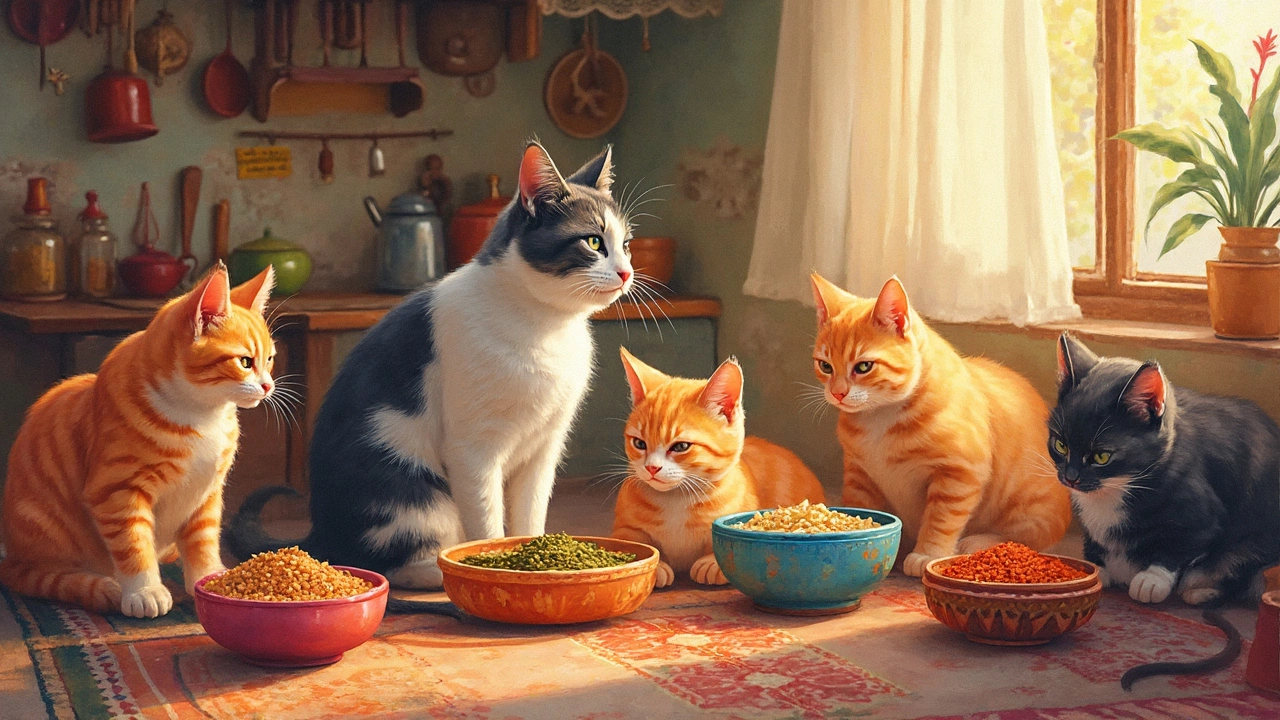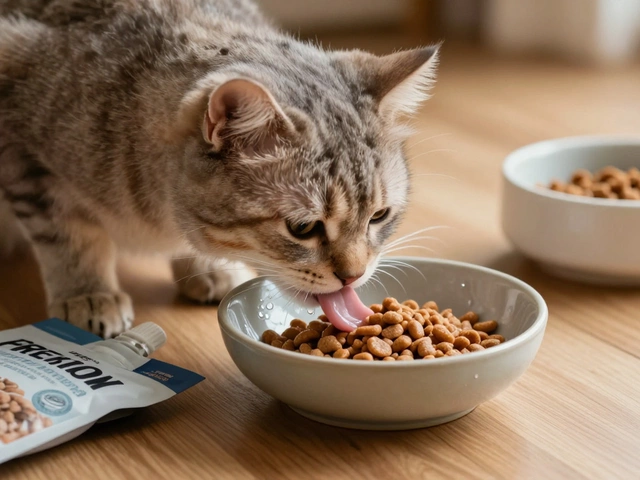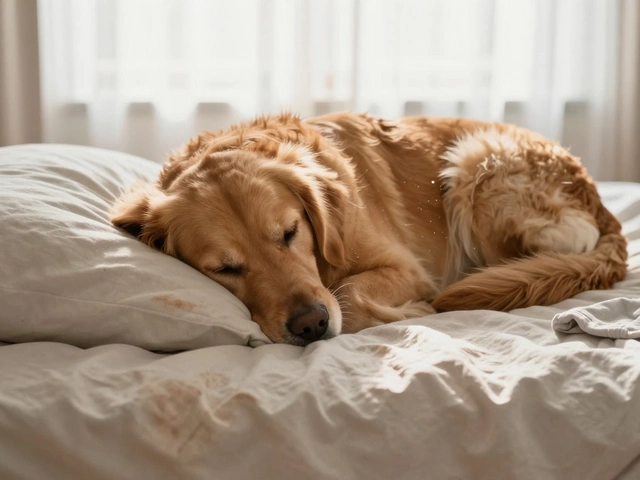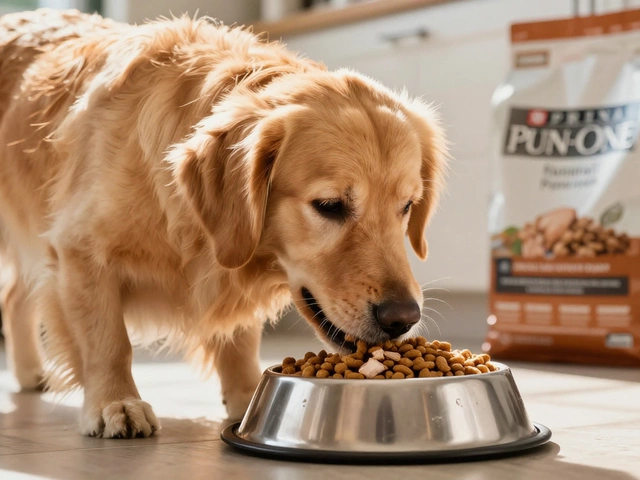
Wondering what exactly goes into making the best cat food? It's not just about feeding your furry friend; it's about nourishing them. Cats are obligate carnivores, which means they need a diet rich in animal protein. But it's not just meat that matters—vitamins and minerals play a big role too.
Got a picky eater on your hands? Or maybe a kitty that needs a special diet? Choosing the right food isn't always easy, but knowing what ingredients to look for—or avoid—can make a huge difference.
From understanding the fine print on cat food labels to weighing the pros and cons of dry versus wet options, there's more to consider than just grabbing any ol' can at the store. Stick around as we dig into some practical tips and share fun facts to help you make the right choice for your pet's meals.
- Understanding Cat Nutrition
- Ingredients to Look For
- Dry Versus Wet Food
- Special Dietary Needs
- Reading Labels Like a Pro
- Tips for Picky Eaters
Understanding Cat Nutrition
So, what's the deal with cat nutrition anyway? Cats aren't just small dogs – their dietary needs are quite different. Since they're obligate carnivores, every meal should be packed with the right kind of proteins, fats, and a balance of essential nutrients.
Protein: The Main Course
Your cat's diet should be rich in animal-based proteins like chicken, fish, or beef. Proteins are crucial for building muscle strength and maintaining a shiny coat. But don't get fooled by labels; focus on seeing real meat, poultry, or fish as the main ingredients instead of vague terms like "meat by-products."
Fats for Energy
Just like with humans, not all fats are bad for your feline friend. Fats provide your cat with more energy than carbohydrates. Look for omega-3 and omega-6 fatty acids, which support a healthy coat and skin.
Vitamins and Minerals: The Little Things Matter
Your cat also needs a blend of vitamins and minerals, often sourced from taurine, vitamin E, and calcium. Taurine, in particular, is vital for heart health and good vision.
- Taurine: Essential for vision and reproductive health.
- Vitamin E: Keeps the immune system running smoothly.
- Calcium: Necessary for strong bones and teeth.
Water: Wet Food vs. Dry Food
Did you know cats generally get a lot of their hydration from their food? That's why many people choose wet food for its higher moisture content. Keep in mind, though, whichever you choose, ensure clean water is always available.
In summary, understanding your cat's nutritional needs can feel like cracking a secret code, but by focusing on their need for high-quality proteins, good fats, vitamins, minerals, and moisture, you can help keep them healthy and happy.
| Nutrient | Recommended Daily Intake |
|---|---|
| Protein | 28-30% |
| Fat | 9-13% |
| Taurine | 0.1% |
Ingredients to Look For
Alright, so you're on a mission to find the best cat food for your feline buddy. Let's dive into the ingredients that really count. First off, protein is king here. Cats thrive on high-quality animal protein like chicken, beef, or fish. Check the label—protein should be one of the first ingredients listed.
Essential Nutrients
- Taurine: This amino acid is crucial for your cat's heart health and vision.
- Fats: Look for healthy sources like fish oil, which provide essential omega-3 and omega-6 fatty acids.
- Vitamins and Minerals: Your cat needs a balanced lineup of vitamins (like A, B, and D) and minerals (such as calcium and phosphorus). These support everything from bone growth to immune function.
Avoid Fillers
Steer clear of fillers and by-products. Ingredients like cornmeal and soy just bulk up the food without providing real nutrition. Instead, focus on kibble or wet foods that list whole meats and veggies.
Reading the Fine Print
Labels can be tricky. If it says 'flavor' or 'dinner', then it might not have much of the main ingredient. Aim for products that clearly list the percentage of each major ingredient.
Fun Fact
Did you know that an adult cat needs around 300 calories a day? And that a higher protein diet can help maintain their lean body mass? Keeping those stats in mind can guide your choices!
Dry Versus Wet Food
Picking between dry and wet cat food can feel like solving a puzzle, right? Both have their perks and pitfalls, so let's break it down.
Dry Cat Food: Kibble Chronicles
Dry cat food, often called kibble, is super convenient. It's easy to store, has a long shelf-life, and let's be honest—scooping it into a bowl is a breeze. Dry food tends to be more affordable, making it a popular choice for many households.
But what about nutrition? Kibble can pack a nutritional punch with protein, carbs, and fats, but you have to keep a watchful eye on those ingredients. Always aim for high-quality proteins and low fillers. And here's a fun fact: chewing kibble can help with your cat's dental health by reducing tartar buildup! But, of course, it's not a replacement for regular cleanings.
Wet Cat Food: The Juicy Stuff
On the flip side, wet cat food usually comes packed with hydration, which is crucial since some cats aren't keen on drinking water. The texture and taste can be more appealing for picky eaters, and it's often closer to what they'd feast on in the wild. It usually has higher protein content, which sits well with their carnivorous needs.
However, wet food needs more frequent buying due to its shorter shelf-life once opened, and it can be a tad pricier. Keep this in mind if you're running on a budget.
Making a Choice
So, which should you choose? Sometimes a mix of both can do wonders—serve wet food for one meal and dry for another to balance hydration and dental health. Keep a close eye on your cat's preferences and nutritional needs to tweak their diet as needed.
| Type | Pros | Cons |
|---|---|---|
| Dry | Convenient, Affordable | May lack moisture, Watch for fillers |
| Wet | Hydrating, High protein | Costly, Shorter shelf-life |

Special Dietary Needs
Just like us, cats can have unique dietary requirements. Whether your feline has allergies, kidney issues, or is on a weight management plan, picking the right food is key. You'd be surprised how a small tweak in diet can make a world of difference.
Allergies and Sensitivities
If your cat is scratching a lot or has digestive issues, they might be allergic to something in their food. Common allergens include certain grains or proteins. Look for hypollergenic options which often eliminate potential triggers like corn or soy.
Kidney Health
Kidneys are super important for your cat's overall health. Cats prone to kidney issues need a diet high in moisture and low in phosphorus. Wet food can be a great choice here since it helps with hydration. Dr. Marie Lavalette, a noted veterinarian, says,
"Cats with chronic kidney disease benefit from diets specifically formulated to support renal function."
Weight Management
If your cat's a bit on the chubby side, don't worry, you're not alone. Many indoor cats face this issue. Look for foods labeled with 'weight control' and high in protein but low in fat. Smaller, protein-rich meals more frequently can keep their energy up without overfeeding.
- Best cat food for allergies: Hypoallergenic or grain-free options.
- Kidney support: Wet food with low phosphorus.
- Weight management: High protein, low-fat formulas.
Always chat with your vet to tailor a diet plan that's just right for your kitty’s needs. It's as important as a regular health check-up!
Reading Labels Like a Pro
Ever stared at a cat food label only to feel more confused than when you started? Don't stress, you're not alone. These labels can be a puzzle if you don't know what you're looking for. But don't worry, by the end of this, you'll be shopping for the best cat food like a champ.
Understand the Ingredients
Let's start with the ingredients list. They are usually ordered by weight. This means the first item is the heaviest before cooking. Look for real meat like chicken or beef at the top. Avoid vague terms like 'meat by-products' or 'animal digest.' They might sound harmless, but they're often low in quality.
Guaranteed Analysis
Next up is the guaranteed analysis section. This part tells you the minimum amounts of protein and fat, and the maximum amounts of fiber and moisture. For a balanced diet, you'll want high protein and fat levels but watch out for the moisture content, especially in wet food. A good example is around 8-10% protein in wet food, which converts to approximately 40-50% in dry matter basis.
Nutritional Adequacy Statement
Check if there's an Association of American Feed Control Officials (AAFCO) statement. This assures that the food is complete and balanced. Such food meets kitty's basic nutritional needs and is suitable for daily feeding.
Decoding Buzzwords
Terms like 'premium' or 'natural' often pop up, but did you know there's no strict regulation on these terms? They might not mean much. Instead, focus on what's really in the food.
- Organic: Means the ingredients were grown without pesticides or synthetic fertilizers.
- Grain-Free: Great for cats with allergies, but isn't necessary for every cat.
- Indoor Formula: Usually lower in calories to prevent weight gain in less active cats.
Special Ingredients
Some foods now boast of additional health benefits, like added probiotics or omega-3s for a shiny coat. These can be a plus but make sure they don't replace the basics of a healthy diet.
Label Comparison Mini-Guide
| Aspect | What to Look For |
|---|---|
| First Ingredient | Real meat (chicken, turkey, beef) |
| Grains | Avoid fillers like corn or soy |
| Fats | Named sources (like chicken fat) |
There you go—some straightforward tips to navigate the cat food aisle with confidence. Armed with this knowledge, you can ensure your furry friend stays healthy and happy, whether you choose dry food or wet options!
Tips for Picky Eaters
Got a cat turning its nose up at dinner? Feeding a picky eater can feel like a game of trial and error, but don't worry—it's a challenge many cat parents face. Let's dive into some tried-and-true strategies to get even the most finicky feline to chow down.
Experiment with Texture
Cats can be particular about textures. Some love the crunch of kibble, while others prefer the moistness of wet food. Consider mixing them up. You might discover your cat has a preference for that delightful combination of crunch and gravy. Balance is key in the best cat food, so trying a variety might uncover what your furball likes best.
Temperature Matters
Believe it or not, temperature can make a big difference. Cats often prefer food at room temperature or slightly warmer because it resembles the temperature of fresh prey. If you're serving canned food straight from the fridge, give it a few seconds in the microwave (make sure it’s not too hot!).
Flavor & Scent
Cats rely heavily on their sense of smell. A strong aroma might entice them to eat. Adding a splash of tuna juice or a sprinkle of bonito flakes can turn dry kibble into an irresistible meal. Just make sure these flavor enhancers don't overpower the meal or introduce unhealthy levels of sodium or fats.
Routine and Environment
Cats are creatures of habit, so maintaining a feeding schedule can help. Find a quiet, stress-free spot for meals. Loud noises or other pets can be distracting, making a pickier eater even more wary of eating.
Consult Your Vet
If your cat's picky eating becomes a real concern, it might be worth having a chat with your vet. They can provide insights into whether your cat's fussiness is just a personality quirk or if there’s an underlying health issue at play.
Here's a quick table assessing texture preferences:
| Texture | Percentage Preference |
|---|---|
| Dry Food | 45% |
| Wet Food | 30% |
| Mixed | 25% |
Tackling the challenge of a picky eater can test your patience, but with these tips, you're a step closer to finding that perfect meal. Remember, food is as much about nutrition as it is about taste and enjoyment for your kitty!





